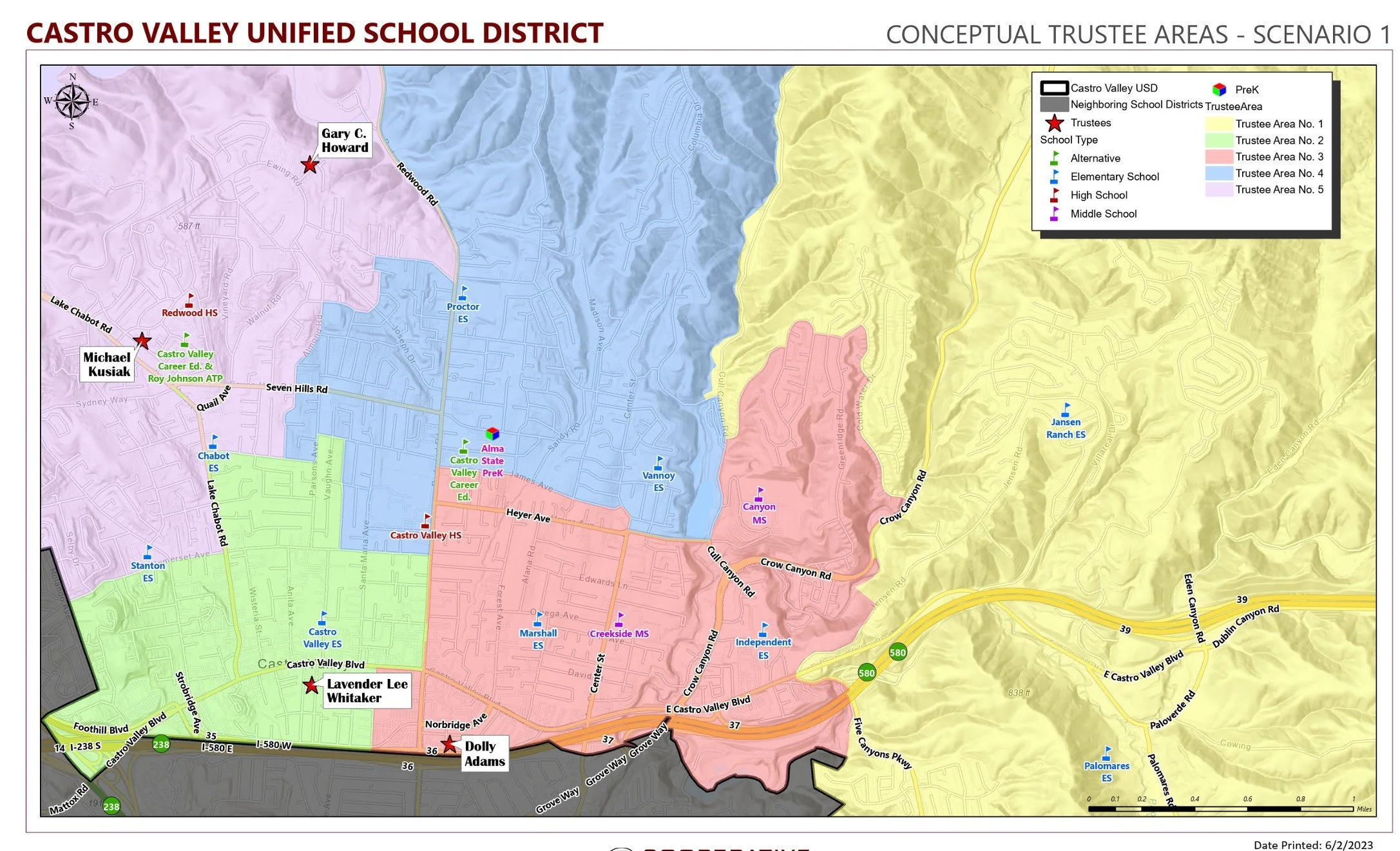Public to Weigh in on Four School Board Voting Maps
In an effort to comply with the California Voting Rights Act and increase voting opportunity amongst diverse populations, the Castro Valley Unified School District (CVUSD) will move towards a “By-Trustee” area election system in 2024.
This new election system involves splitting the school district into five separate trustee areas, with a governing board member elected from each trustee area. Board members are elected only by the registered voters in the particular trustee area where the governing board member resides.
Castro Valley’s largest ethnic group is White (36.7%), followed by Asian (31.2%) and Hispanic (16.9%), according to the 2020 US Census. CVUSD’s student body of 9,200 is made up of 24.3% White, 4.9% Black, 34.1% Asian or Asian/Pacific Islander, 23.3% Hispanic/Latino, and 12.9% of students are two or more races.
However, this population diversity has not been accurately represented amongst the Board of Trustees, which has been predominantly White.
Board Members have teamed up with consulting firm Cooperative Strategies to come up with multiple map options to split up the district. There are currently four potential maps, and possibly more after citizens expressed concerns at the Public Hearing during the June 14 School Board Meeting.
These maps were created using data from the 2020 U.S. Census Bureau.
One criterion for these maps is that the population must be divided as equal “as is practicable,” keeping in mind that they represent people, not citizens. This adheres to Education Code section 1002 which states that: “trustee areas shall be nearly equal in population.” The maps must also avoid “bottlenecking” areas.
Many of these citizens were parents worried about this transition affecting where their child attends school, but Superintendent Parvin Ahmadi has assured that this new system will have no effect on where students attend school.
However, some were more concerned with the prioritization of equal population division of the maps and instead wanted more of a focus on communities of interest.
A speaker at the Public Hearing, Peter Rosen, said that “someone who lives in Palomares should not be voting for someone who lives in Chabot. They have completely different facilities and different issues.”
In response to citizens’ concerns, the board said they would try to make two new maps to address these worries in time for the last Public Hearing on June 28. One map will focus on keeping schools from being separated into different districts, and the other will use "strips" of division instead of large chunks.
Trustee Gary Howard sympathized with the meeting attendees: “We don’t want tobe doing this, but we have to. There is no perfect solution. Trustees are not responsible for only one or two schools. We are trustees for all of them.”
Meeting information can be found on the CVUSD website (https://www.cv.k12.ca.us/).


